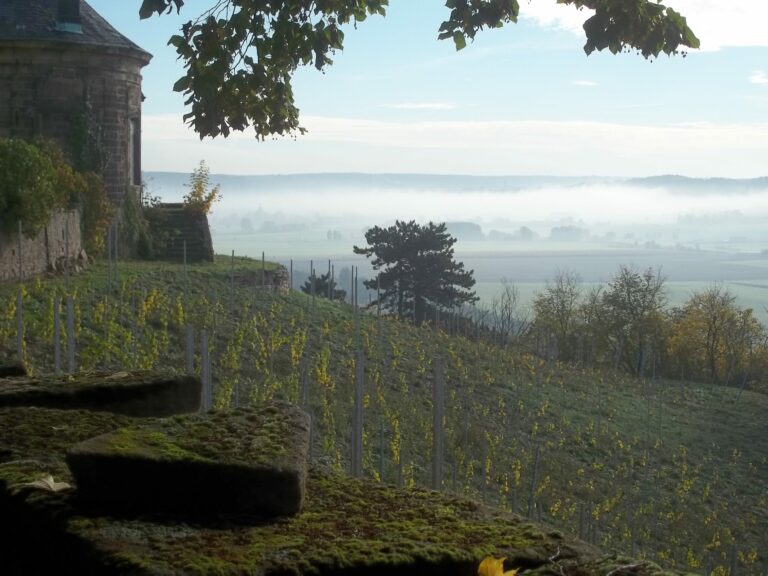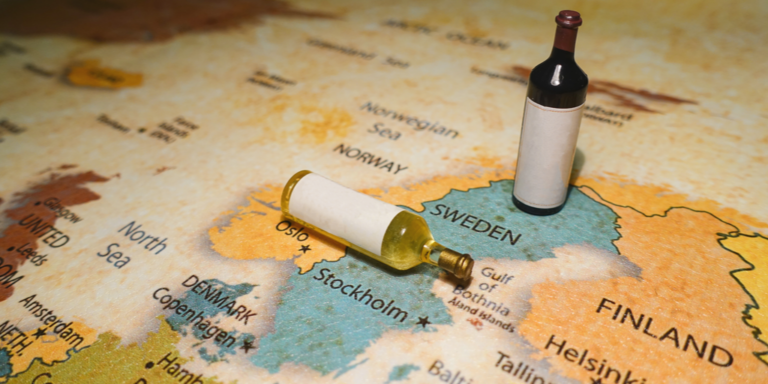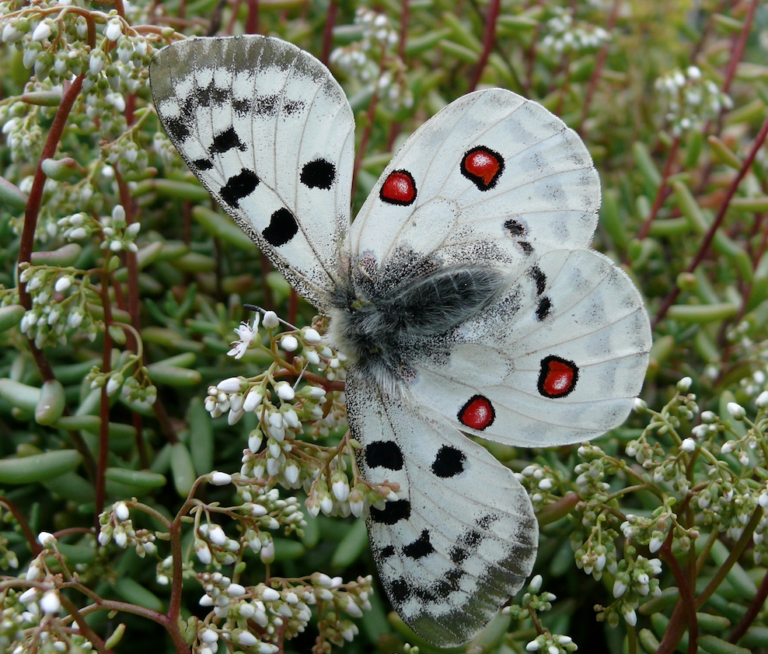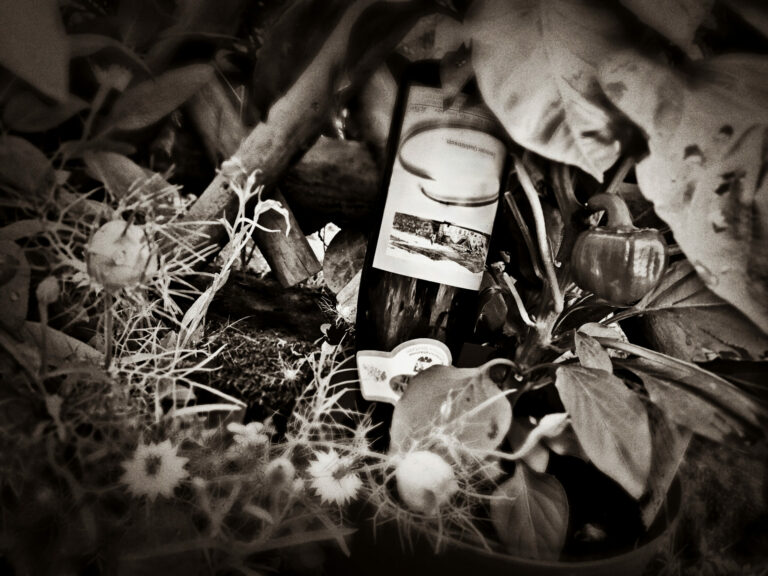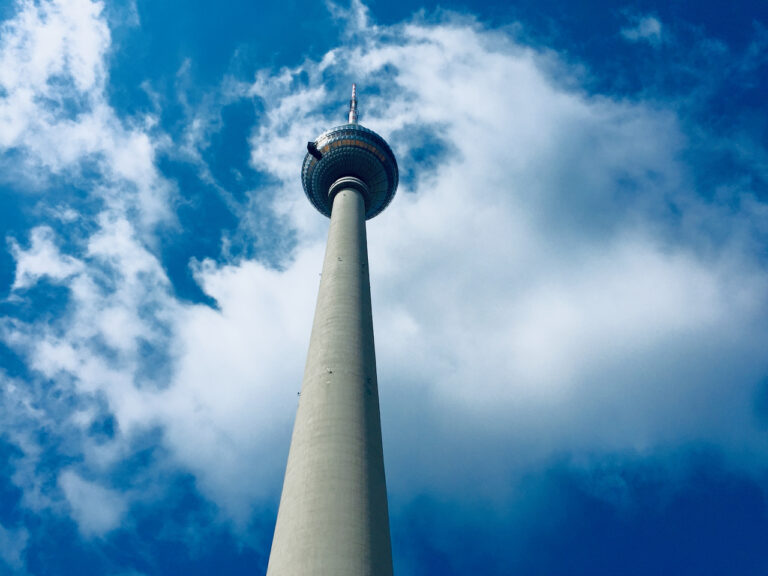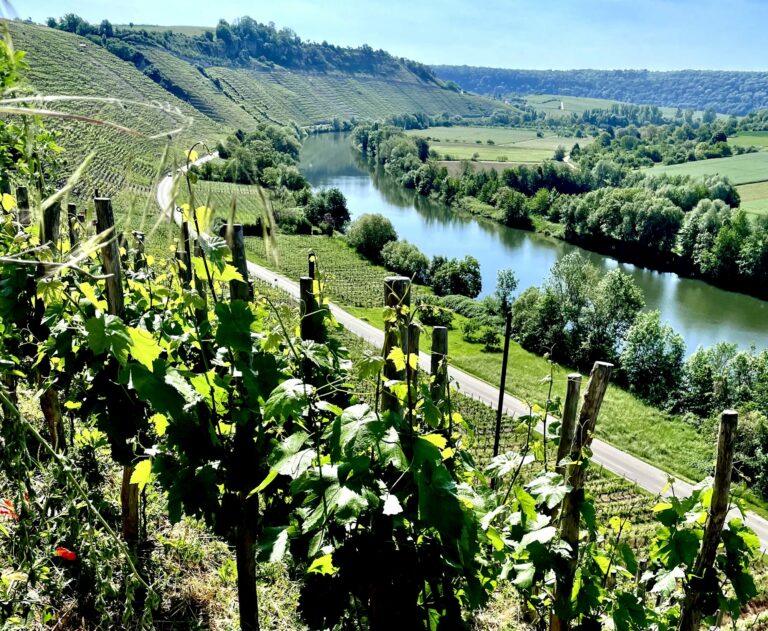Inside the Konzer Tälchen
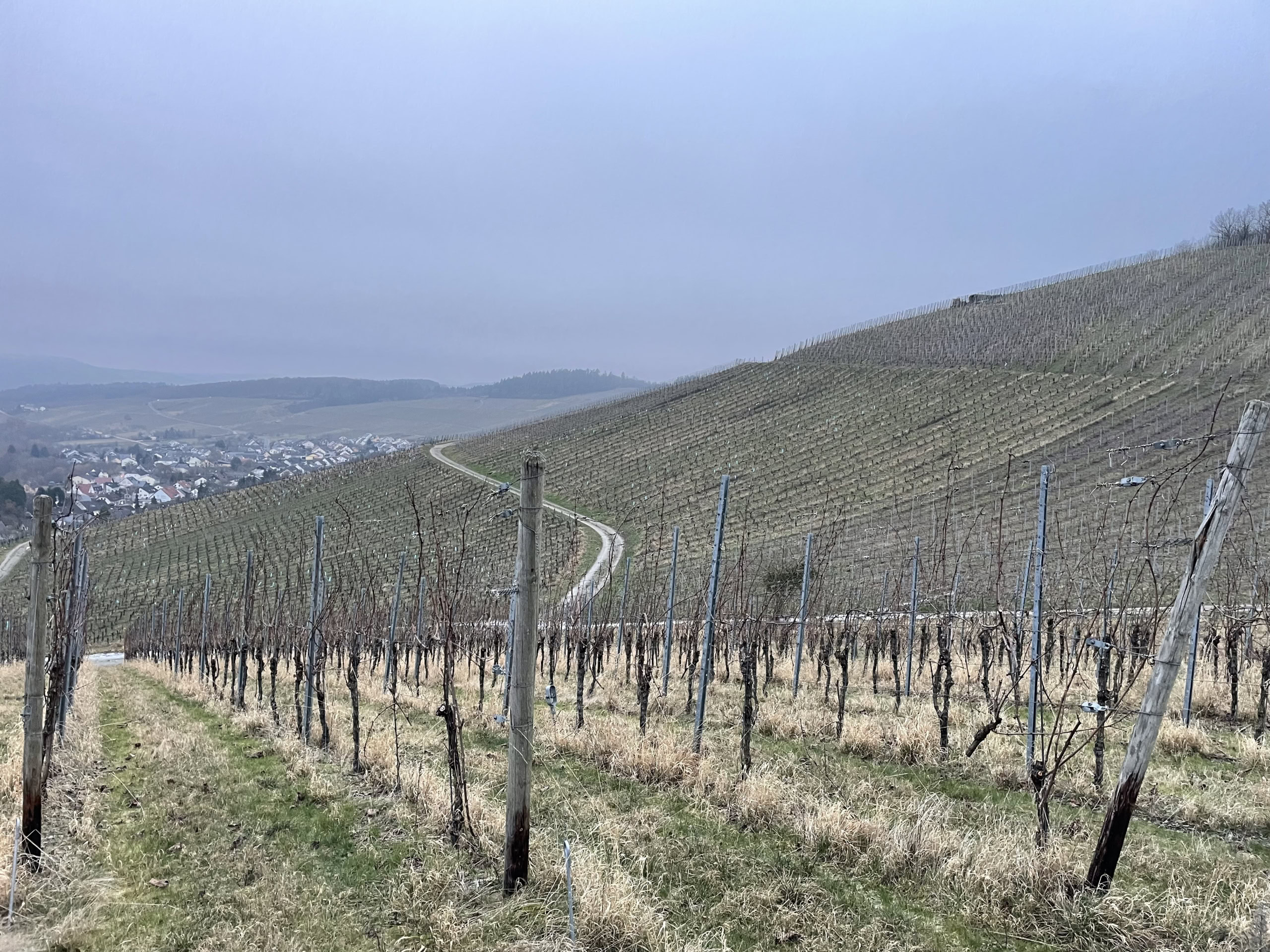
The Saar River flows into the Mosel at Konz, just past Trier. From there, the Konzer Tälchen (Konz Valley) stretches out to the southeast of the city. “This is actually where the Mosel flowed, 1.3 million years ago anyway,” says Erich Weber, who together with his son Johannes leads Hofgut Falkenstein in Niedermennig. The only remnant of that history today is a small stream called the Konzer Bach. The Saar itself, the major point of orientation for most estates in the region, meanders through a neighboring valley.
The German name “Tälchen” suggests a diminutive. This is perhaps true at a geographic level. The four villages of the Konzer Tälchen — Krettnach, Niedermennig, Obermennig, and Oberemmel — are set amidst vineyards, forest rises, harvest fields, and wild plantations. Truly, it doesn’t take long to traverse the entirety of this valley.
But there’s nothing diminutive whatsoever when it comes to the region’s winegrowing prowess. On the contrary, it is home to wines of international renown, such as those of Hofgut Falkenstein. Treated for many years as an insider’s secret, Falkenstein is among the most in-demand estates from the Saar, celebrated from Tokyo to New York. Its wines are the quintessence of the Saar’s unique Riesling style, with Erich Weber as its most radical and consistent vintner.
But other estates bring a taste of this remarkable little area to the wider world, too, such as Max von Kunow of Weingut von Hövel, Stefan Müller, Stephan and Michael Weber of Weber Brüder (unrelated to the Webers of Hofgut Falkenstein), and Weingut Willems-Willems, under managing director and cellar master Miguel Louro.
In the end, however, few can trace the development of the Konzer Tälchen based on personal experience in quite as much detail as Erich Weber, whose tenacious nature helped set the stage for the current boom. Weber, born in 1955, still wears his hair long, even if it’s gotten a little thin with time. The vintner is quite fit, his face tanned from exposure to the elements. This is quite clearly a man who spends his days working in the vineyards.
Stepping Out of the Scharzhofberg’s Shadow
Head out with Weber to the Krettnacher Euchariusberg and you’ll quickly come to appreciate the changeable cycles, the highs and lows of winegrowing in the region: Unlike today, the Konzer Tälchen long stood on the fringes of viticultural viability, until well into the 1990s at least. “It was cold as hell,” Weber says. Of ten vintages, “you could maybe drink three of them, and the rest went to produce sparkling wine or blends.”
But Weber, who acquired the somewhat dilapidated Falkensteiner Hof in 1985, was a firm believer in the potential of the sites: The Euchariusberg was included on the agricultural map of 1868 from Franz Josef Clotten, marked in dark red as one of the best sites. With its blue-green slate, quartz, and subterranean veins of water, it holds up well in comparisons even with the fabled Scharzhofberg in Wiltingen, where the Egon Müller dynasty has worked its wine magic for generations.
The Scharzhofberg is only three kilometers away, with an almost identical southern-facing topography: For Erich Weber, the Euchariusberg is the grand cru of the Konzer Tälchen, and well on its way to stepping out from the Scharzhofberg’s shadow.
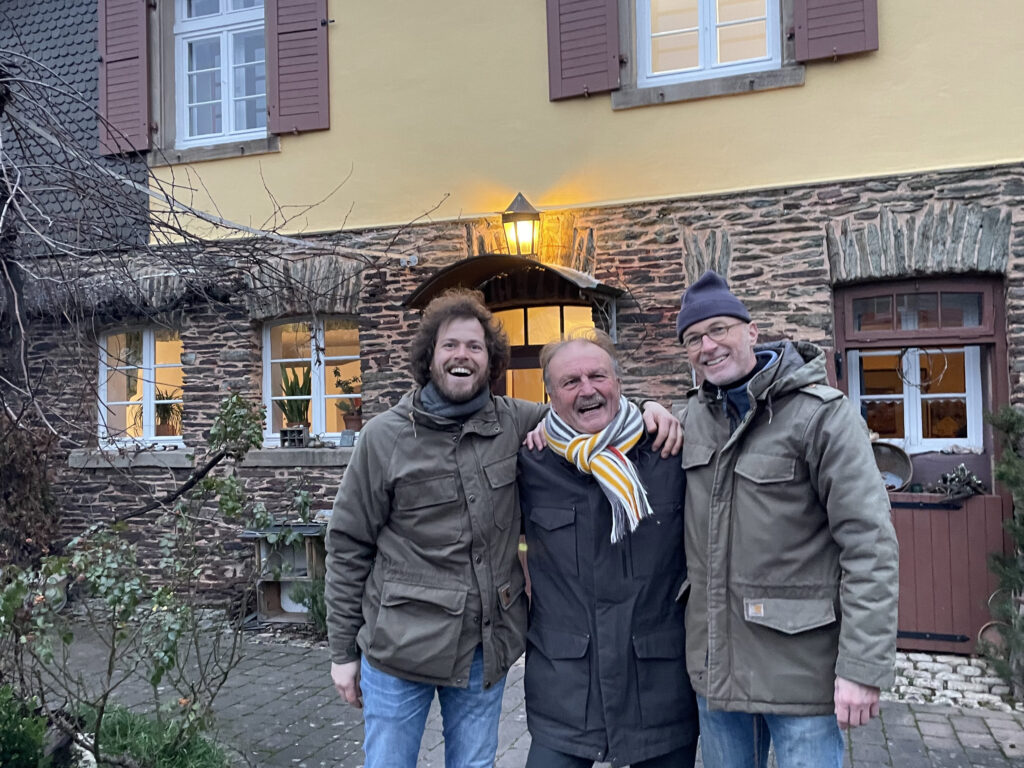
Weber’s first parcel was at the foot of the frosty Euchariusberg. Affluent estate owners sat on the top and seemed to enjoy nothing more than annoying the young winemaker: “Dear boy, is there still snow down there?” he says they’d call down. Things have changed. Weber now owns three out of the four-and-a-half total hectares on this top site.
There’s a bit of pride, but also a bit of awe, as he stands at the crest of the Euchariusberg. Given the wind and fog blowing through the valley, it’s easy to understand why vintners so often lost their fight to achieve ripeness in the grapes. Even the valley’s finest vineyards were “always between heaven and hell,” as somebody once described it.
But Erich Weber had studied the “old books, maps, and auction prices”: Back in the early 20th century, Saar Riesling was among the world’s most coveted wines. It was clear to him that the region would eventually forge a link back to those times. “The question was: When would it awaken from its slumber?” Erich Weber recalls. The Saar, and the Konzer Tälchen in particular, has since benefited from climate change, perhaps more than any other German winegrowing region.
Erich Weber, who grew up in Krettnach and has spent his whole life in this narrow valley, knows just how special it is. As he says, it’s a “side valley of a side valley, and well off the beaten track.” Its residents are known as aloof and hardheaded. “It’s often dark in the valley, so people are out and about in the darkness,” Weber explains.
There has traditionally been an intense rivalry between villages like Krettnach and Oberemmel, and those tensions can flare up even today. The Krettnach natives dismiss Oberemmel as “already over the border to foreign lands,” Weber explains, because in the Middle Ages, the land belonged to Mettlach Abbey while the other villages belonged to St. Matthias Abbey in Trier. It was “inconceivable” for someone from Krettnach to marry into an Oberemmel family. Things often got rough and rowdy at village festivals.
Betting on Side Valleys
Over in Oberemmel, Max von Kunow leads Weingut von Hövel, which since 1803 has cultivated famous sites such as Scharzhofberg and Oberemmeler Hütte, a monopole holding of the estate. He aims for grapes cultivated without the use of chemicals and with much more hand than machine work. To this end, the wines age in fuder casks in a vaulted cellar dating back more than 1,100 years.
“There are few wine regions anywhere in the world where you’ll find so much taste with so little alcohol,” says Max von Kunow of the lower Saar Valley and the Konzer Tälchen. This reflects the extraordinary local climatic and soil conditions: “We are closer to the coast, the rains come to us from the Atlantic,” the winegrower says. Blue Devonian slate and cool conditions form the basis for taut, dynamic Rieslings.
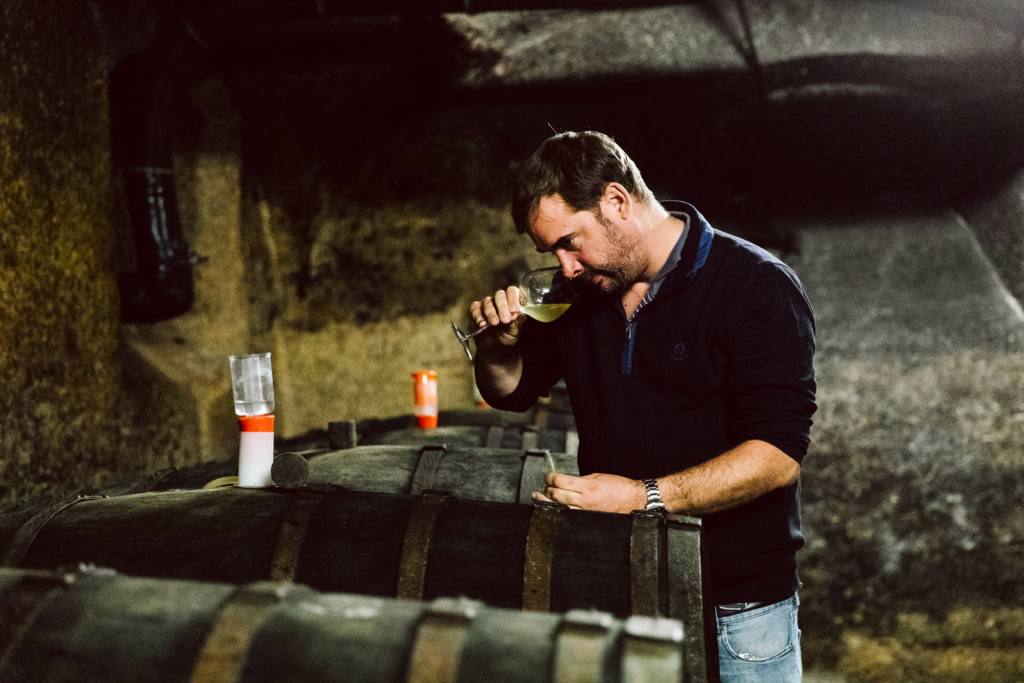
In some estates, an open-minded generation unbothered by classic borders has taken the helm. This includes a number of German cellar masters working in Luxembourg, such as Stephan Weber at Domaine Ruppert in Schengen — although he and his brother Michael do run their own estate, Weber Brüder, in Wiltingen an der Saar. One part of his four hectares of vines stands in the Konzer Tälchen, on Oberemmeler Altenberg and Krettnacher Altenberg, the latter of which has a rare and remarkable geological mix of green and gray slate with basalt. For Stephan Weber, the future is on the Saar and its side valleys, which offer “unique opportunities for viticulture.”
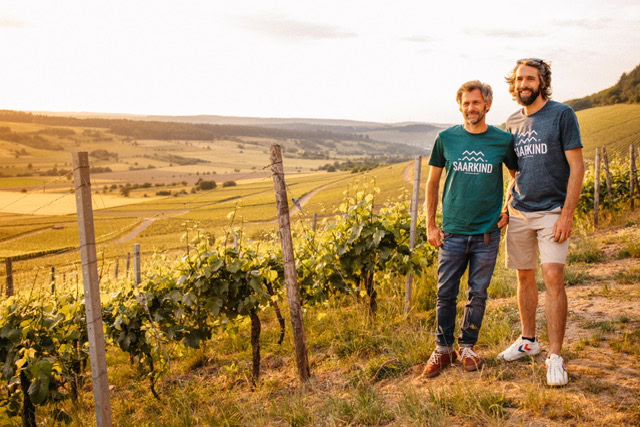
That includes rising temperatures in recent years, with the mercury climbing above 35° C in summer 2018. “The last five years have been shaped by climate change,” says Erich Weber, although the slow warming of the Konzer Tälchen began over 40 years ago. Vines on sites like Euchariusberg are handling the changes just fine. At Hofgut Falkenstein, harvest now begins in early September “to maintain our style,” says Weber. Handcraftsmanship is the measure of things. “We toil throughout the entire year to achieve good fruit. This includes heavy selection to reduce yields to 25 hectoliters per hectare.
The Webers are almost archaic in their cellar work. The grapes are gently pressed, with gravity used to move the must into the old vaulted cellar whose walls are covered in black mold. Sedimentation takes place in old 1,000-liter Mosel fuder using local oak, followed by wild fermentation. The wines are never enriched, concentrated, fined, acidified, or deacidified. “Any intervention takes away part of the taste of this place,” Weber says. It would be hard to make wine with fewer steps, since they’ve pared down the process to its most essential elements: “We prefer to let the mysterious side of wine do its work,” says Erich Weber, even if that is “not always something you can touch.”
Johannes Weber, born in 1988, is the heir apparent to the estate. Although a Geisenheim graduate, it was not until he apprenticed far away in Australia and New Zealand that he understood what a once-in-a-millennium terroir he had in the Konzer Tälchen. Hofgut Falkenstein produces fine, taut wines that sashay across the palate, graceful and minimalist and yet impressively intense and electric.
These are advanced Rieslings, borne by a crystalline acidity seemingly shot from a laser beam. “We love acid,” Johannes Weber admits enthusiastically, no surprise given that his wines usually measure in double-digit acidity levels. Yet they are all the more remarkable for it — perpetually challenging, never overly aggressive. When he drinks them, Johannes Weber’s wines make him “think about cool and raw landscapes like Iceland, with inner beauty.”
His father remembers the early years all too well. It was a time when he wended through the valley trying to sell wines from the back of his car. His wife Marita was home with their three small children, and at times he didn’t know how to keep all those mouths full. “I never had money,” Weber says. “The first 20 years was a bit of a suicide mission.”
Those days are long gone, but it took hard-nosed vintners like him to ensure the viticulture survived in the Konzer Tälchen at all. The current boom is just the start of a success story: Weber and von Kunow agree that Rieslings of this kind “really can’t be produced anywhere else in the world,” as von Kunow formulates it. He thinks it’s “lunacy to claim that there won’t be any Riesling left here in 100 years, whatever some people say.” A century from now, this little valley will still be cool.
Translated by weinstory.de

